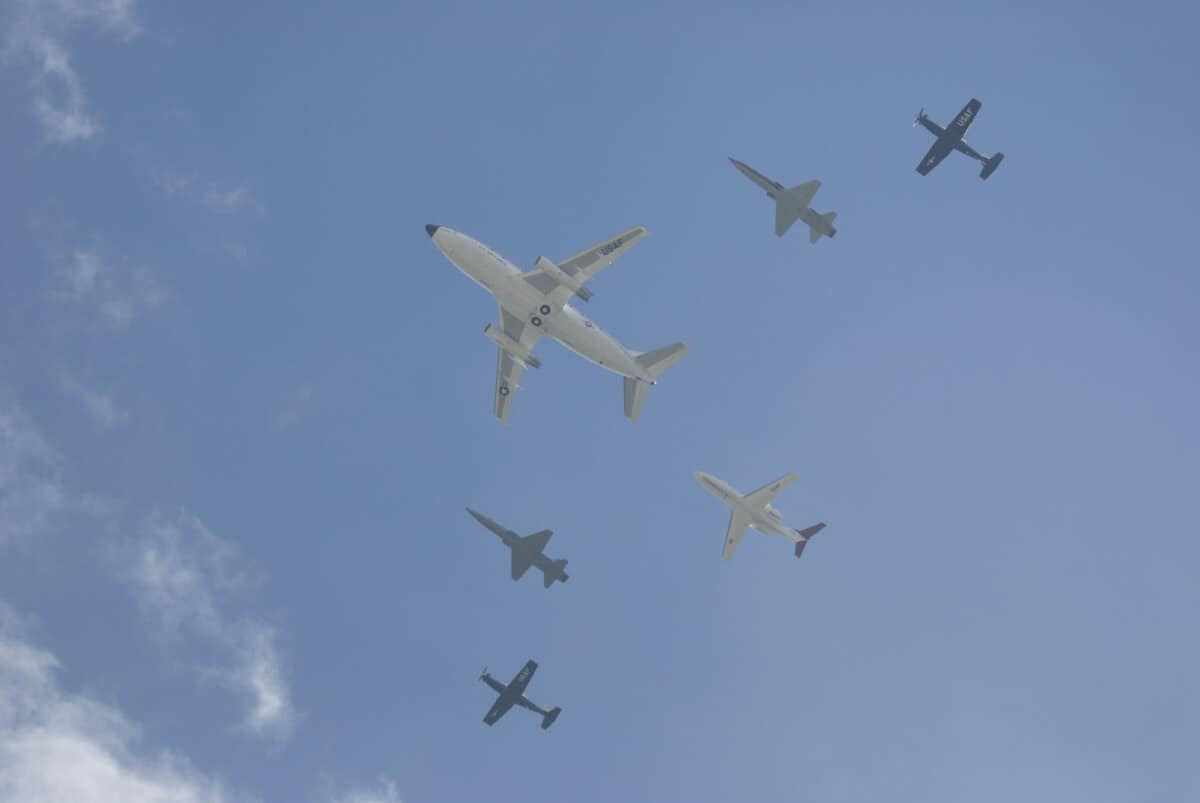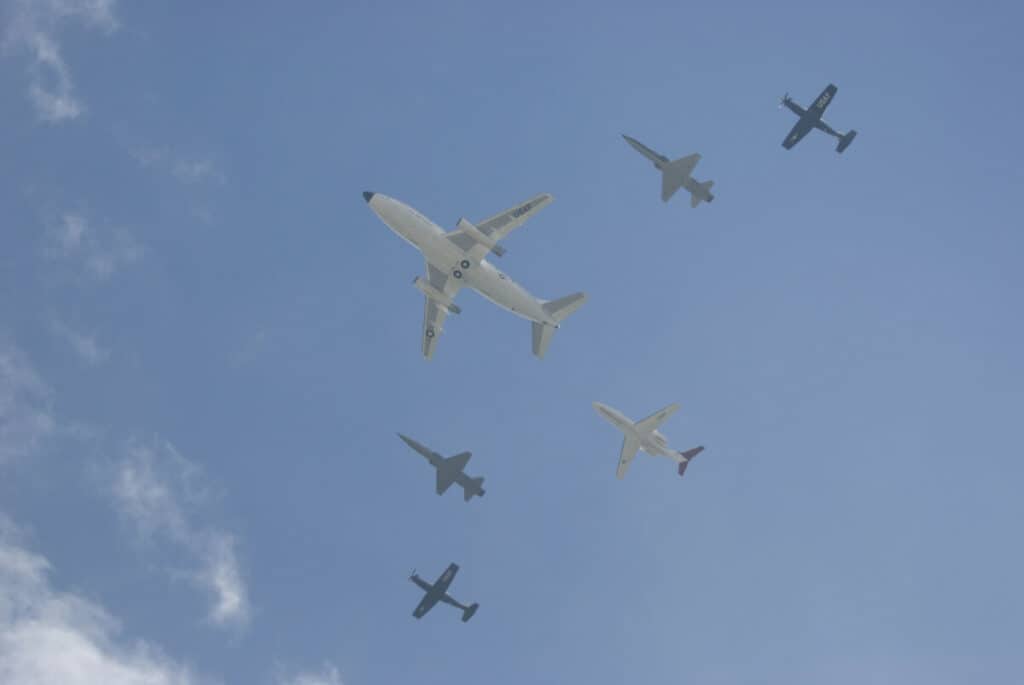
We all know that wings are the reason behind aircraft being able to fly but for those of you with a keen eye, you may have noticed that not all wing shapes are the same. The questions are why do different aircraft have a particular shape of wing instead of all using the same shape?
Airplane wing shape is the culmination of design compromises. Aerodynamics, aircraft weight, operating speed, and the aerodynamic stress and loads imposed on them all require different shapes with the most efficient shape being used for that particular aircraft and its envelope of operation.
The most common airplane wing shapes are:
- Rectangular
- Elliptical
- Tapered
- Swept Back
- Swept Forward
- Delta
Each wing shape has both positive and negative aspects and during the design phase of the aircraft, the engineers have to spend hundreds of thousands of hours designing and testing the wing for the new aircraft.
No wing shape is perfect so the design team has to come up with the most efficient shape to create high lift and low drag at all speeds within the aircraft’s flight envelope. They can use additional devices like winglets, spoilers, and flaps to help with low-speed flight, but they are secondary to the main design.
As you can imagine the flight speeds and operational envelope of a simple training aircraft is very different from that of a commercial airliner, which in turn, is also very different from a high-performance military combat jet.
Because these operational areas are so different from one another, the designers have to find the best wing shape to give the aircraft its highest performance within that operational area. The final design may be a particular wing shape or a combination of several shapes to get the highest-performing wing.
As an airplane’s speed increases, the drag the wing creates also increases. This requires more power to overcome. Also, as an airplane’s speed increases and its altitude increases the controllability of the aircraft changes.
Airplanes flying at slow speeds and relatively low altitudes can have very basic wing designs because the lift and drag the wing produces changes very little. The stresses imparted on the aircraft are also very subtle because pilots elect to fly slow and steady.
As an aircraft gets faster and higher the wing shape needs to be changed to allow the drag created to be reduced and allow controllability to be maintained. If you then add in abrupt, high-G flight maneuvers the stresses imparted onto the wing can be considerable.
Basic wing constructions would fail under these conditions hence why different shapes are used.
Before hopping onto different shapes of wings, let’s discuss a basic wing construction that any wing, irrespective of its shape will possess.
Airplane Wing Construction
No matter the size and type of aircraft, all wings are built using the same similar design. Even from the dawn of aviation, the wing construction design has stayed very similar, only with today’s modern aircraft using different materials and innovations to improve the wing.
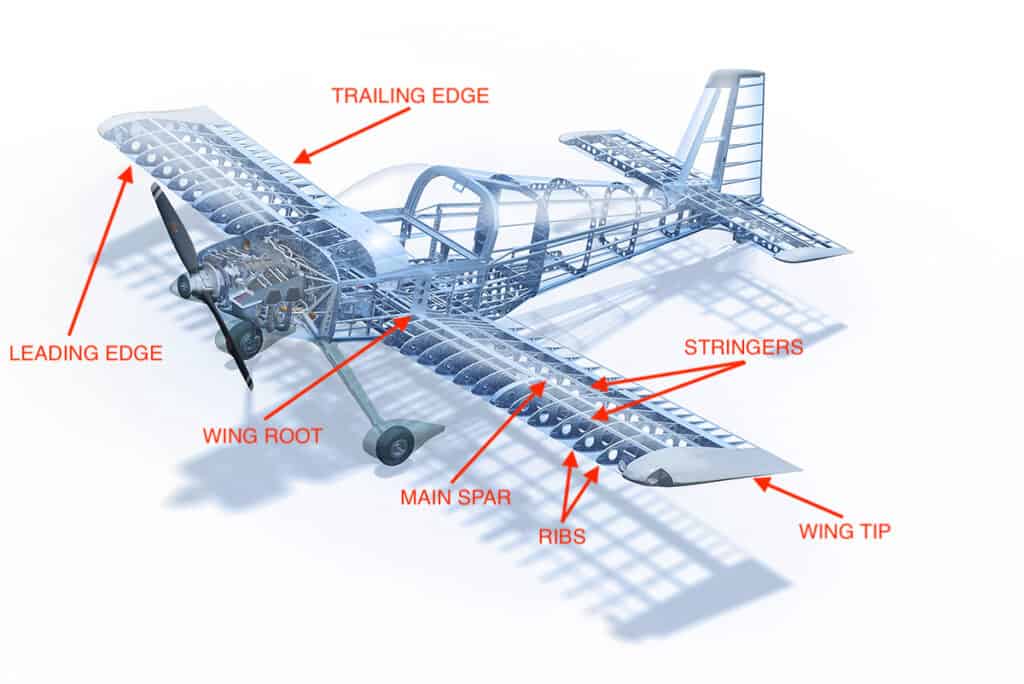
All wings are constructed using the following components:
Main Spar:
The “I” beam kind of structure or ‘Spine’ that runs parallel to the lateral axis of the aircraft from wing root to wing tip. It acts as a primary load-bearing structure of each wing. Spars are connected to the fuselage structure to join the wing to the aircraft body.
Spars allow for the wing to flex up and down like a bird flapping its wings during turbulence and high-load moments.
Ribs:
Ribs are numerous structures running spanwise along the wing, each rib is fixed to the main spar fixed and provides a secondary structure that takes the load from the leading edge to the trailing edge. The ribs create the curvature of the upper and lower surfaces to form the wings’ shape.
Stringers:
Stringers are pieces that run parallel to the main spar and connect each rib to one another. Stringers help to keep each rib parallel to its neighbor and help prevent twisting of the wing. There are numerous stringers that run along the wing from root to tip and these help the wing stay strong, yet flexible.
Skin:
Metal sheets are placed on the wing spars and ribs, stressed and riveted to form not only the wing surface but also the housing for fuel. The latest generation of aircraft are now using composite materials and woven carbon fiber to create the wing’s surface making them even stronger than traditional aluminum and considerably lighter.
Learn More…
Try These Articles:
* Why Do Fighter Pilots Wear Masks, But Airline Pilots Don’t?
* How Do Airplanes Not Freeze?
What are the Different Types of Aircraft Wing Shape?
Rectangular Wings
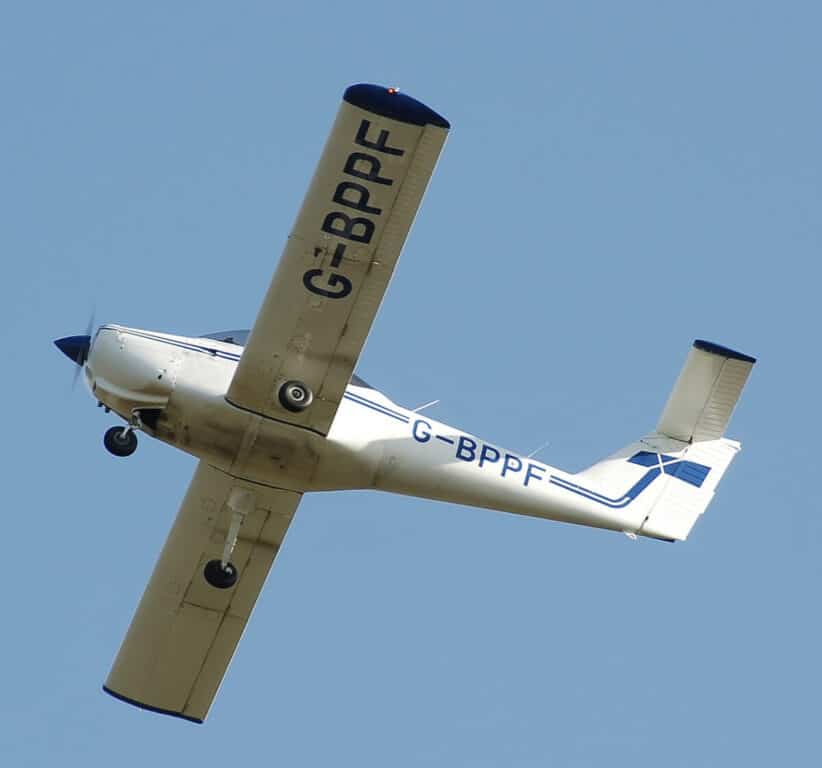
They are most commonly used on training and personal airplanes where smooth control and stable flight is paramount. Construction of a rectangular wing is simple as it doesn’t have complex curves or any change in dimensions leading to low-cost manufacturing and maintenance.
Because of the low-speed flight (<150kts) and relatively low altitudes (<20,000ft) these aircraft fly at the best design choice is the rectangular wing. Another bonus of this shape is its more desirable stall characteristics which begin at the wing root making it less severe. A stall at the wing tip causes an airplane to roll.
This type of stall condition allows for lots of time for the pilot to recover should they find themselves flying into a dangerous flight characteristic.

Join My Newsletter & Get Great Tips, Information and Experiences To Help You Become a Superb Pilot!
Elliptical Wings
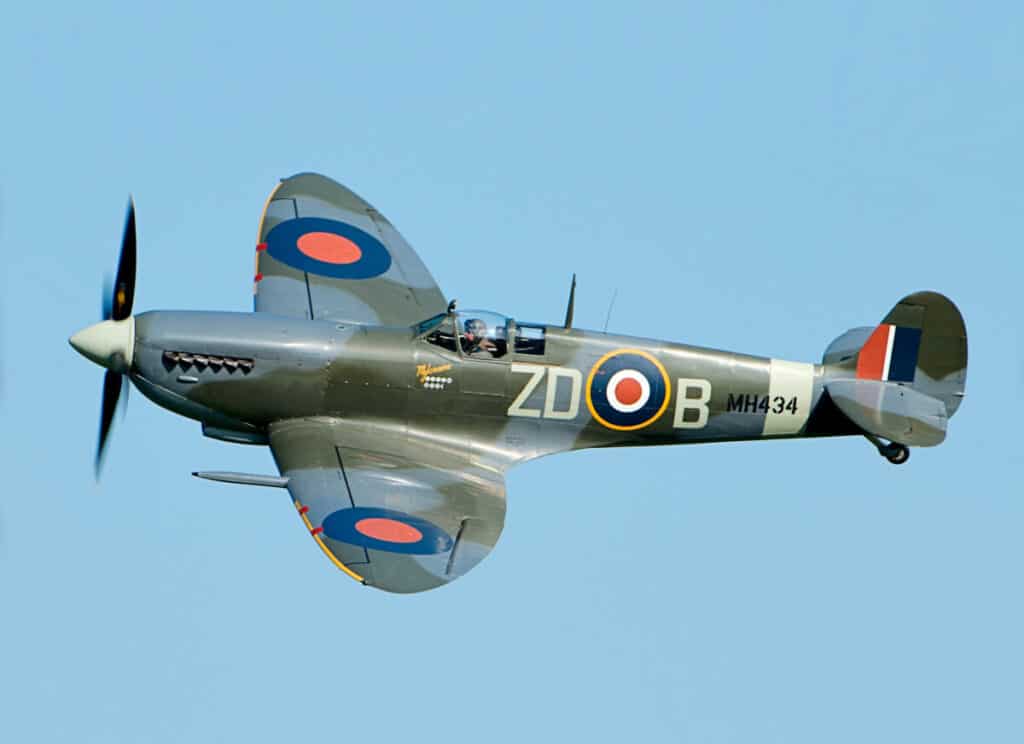
Pretty much the only time you will see an elliptical wing shape is on the Supermarine Spitfire of WWII. A revolution in its design in the 1930s.
The designers wanted a wing that was thick at the root to be able to house the landing gear, machine guns, and fuel tanks, but thin at the wingtip. They also needed a wing that produced the least amount of drag at high speed to allow the top speed of the aircraft to be as high as possible to outmaneuver the German competition.
The elliptical design gave the best shape as it allowed for relatively easy manufacturing while reducing both the thickness and the taper from root to tip, but also reduced the wing tip air recirculation which dramatically increases drag. The elliptical wing tip provides the smallest area for the vortices to work on thus reducing the drag and allowing for more power to be used for airspeed.
The main problem with this wing shape, however, is that it can easily stall when flown at low speed. Because of this, pilots would fly them fast at all times, even when landing!
As aviation came out of WWII and the requirements for wings to house machine guns and be highly maneuverable made this wing shape obsolete. The very little warning for the onset of a stall also made them undesirable to the aviation world trying to focus on safe cargo and passenger transportation.
For more information on Wingtip Vortices and the Drag they create please read this article:
What are Airplane Wingtip Vortices?
Tapered Wings
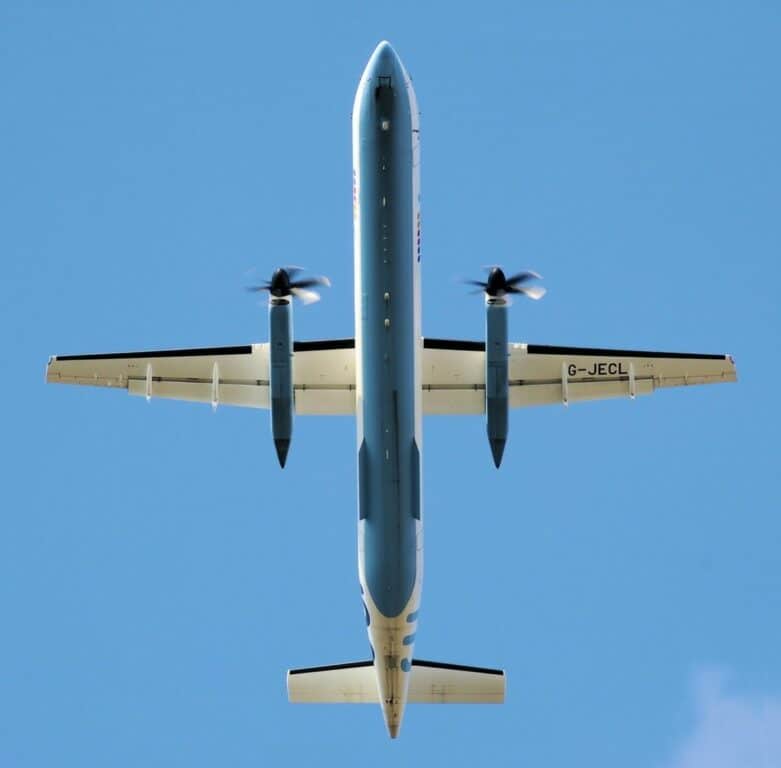
To find a balance between rectangular and elliptical wings, tapered wings were introduced.
The leading edge and the trailing edge of the wing taper toward the tips, constantly reducing the width from root to tip. This helped in reducing the induced drag created by the wing and was also cheaper to manufacture.
The tapered design gives a small wing tip allowing for faster airspeeds compared to a rectangular wing due to the lower amount of wingtip vortices that act on the wing tip. Because of this, airspeeds up 415knots/475mph were achievable with good control throughout the speed range.
One downside to the tapered wing is the almost equal lift produced along the entire wing. The wing when it stalls, stalls entirely and gives the pilot very little time to react, but due to this wing becoming popular on early commercial aircraft the speed limitation pilots were to abide by made this issue non-existent.
You can find tapered wings in use in gliders, smaller commercial commuter aircraft like the Bombardier Dash 8 Q400 above, or on the Lockheed Martin U2 spyplane (Wiki Link) which flies up to 70,000ft but is relatively slow to allow for reconnaissance images to be collected.
When airspeeds begin to go above 500mph drag becomes a major issue for wing designers and an alternate shape is required.
Swept Back Wings
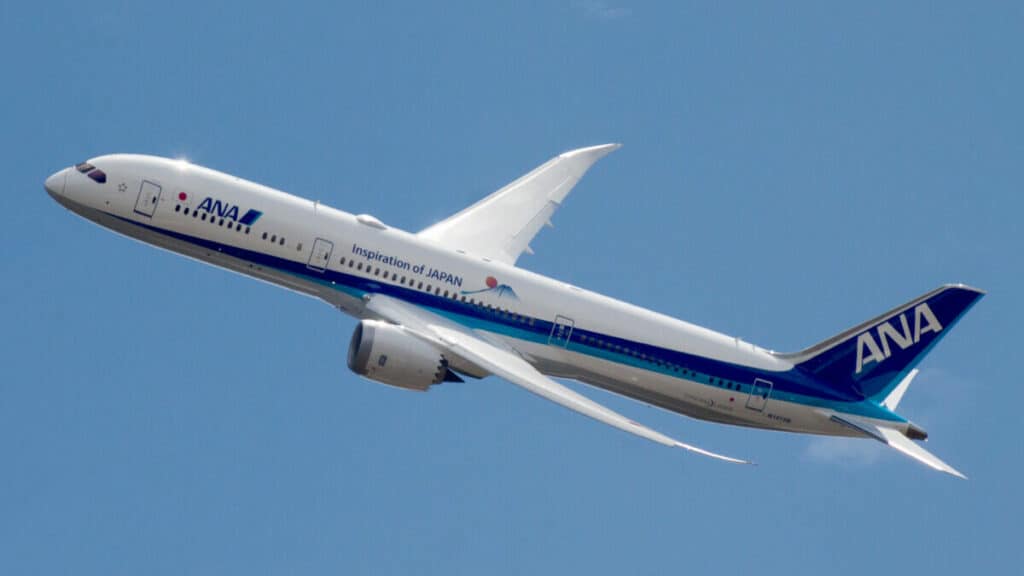
Modern airliners have swept-back wings due to the speed in which they fly. This is known as Transonic Speed and varies with atmospheric conditions, but generally is around the 0.8 – 1.2 Mach (615-920mph).
As a rectangular wing moves through the air in this speed range, areas of subsonic and supersonic airflows begin to form around the wings leading edge. As a rectangular wing goes supersonic (approaching the sound barrier) the wing begins to experience unsteadiness, areas of irregular lift, and higher areas of drag. This can cause the wing to stall and lead to a loss of control by the pilot/s.
To overcome these aerodynamic issues designers found that if they reduced the depth of the wing from leading edge to trailing edge (known as the ‘Chord’) this would slow the airflow down enough to prevent the onset of transonic airflow.
However, to gain enough lift from a wing with a thin chord would require wings to be incredibly long which does not work on a large commercial jet. Designers found that by gradually tapering or reducing the chord width from root to tip and sweeping the wings back it allowed the airflow to meet the wing at an angle and kept the airflow subsonic while providing enough wing surface area to create sufficient lift for the airplane.
Swept Forward Wings
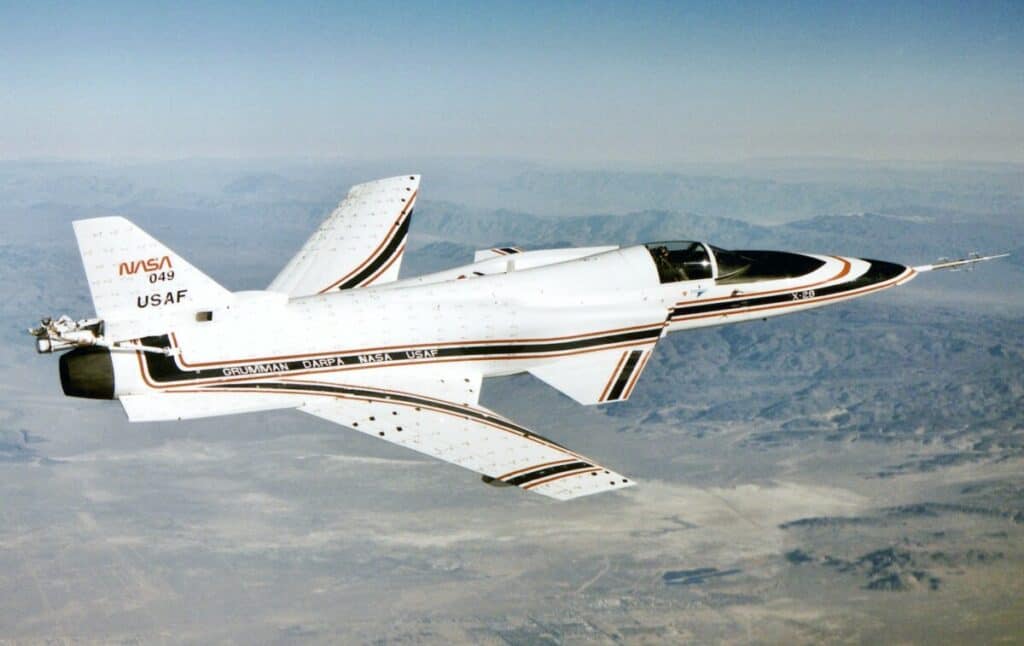
Forward-swept wings have been tried by several countries and aircraft manufacturers but have never been put into mass production. The design of this type of wing was used to improve the performance of the ailerons at both low and high speeds.
On a conventional wing, the tip begins to stall first, either at high speed from Transonic airflow or by wingtip vortices. Because the ailerons are mounted close to the wing tips these stalled areas affected how well the ailerons worked. By sweeping the wings forward, designers found the root would stall before the tip, thus improving the performance of the ailerons, thus improving maneuverability and controllability.
With these advantages the military was keen to develop this style of wing further but due to the aircraft needing advanced composites to build the wing to prevent excessive twisting of the wing tips and although highly maneuverable it was very unstable to fly, especially during certain high-speed maneuvers, the technology was never developed further.
Delta Wings
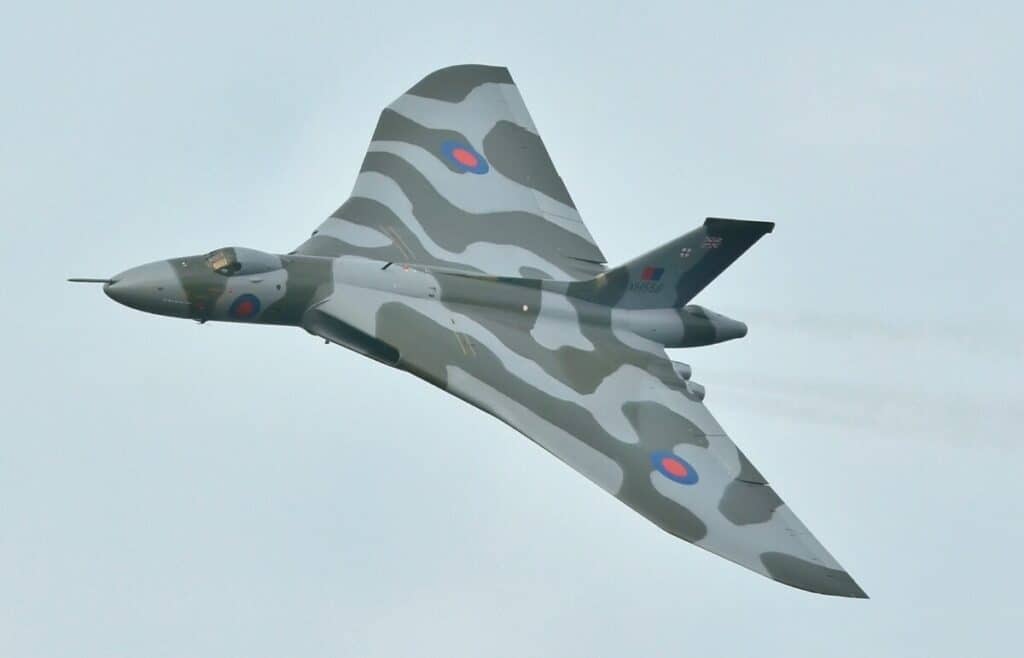
When flying around the sound barrier shockwaves form as they meet the wings leading edge. The shockwaves reduce lift and increase drag. For early fast jet and bomber designers, the Delta Wing allowed the rest of the wing to remain behind the shockwave created at the wing root.
By doing so the majority of the wing stayed in smooth airflow allowing for maximum lift production at high speed. Concorde was the most noticeable Delta Wing aircraft with its steep leading edge on its delta.
Delta wings allow for a cavernous volume to be stored inside them making them perfect for large fuel or bomb loads, depending on the aircraft. Delta wings are now confined to military aircraft due to the size of wing needed for commercial aircraft to be very, very large and less efficient than the swept-back wing we see on all commercial airliners.
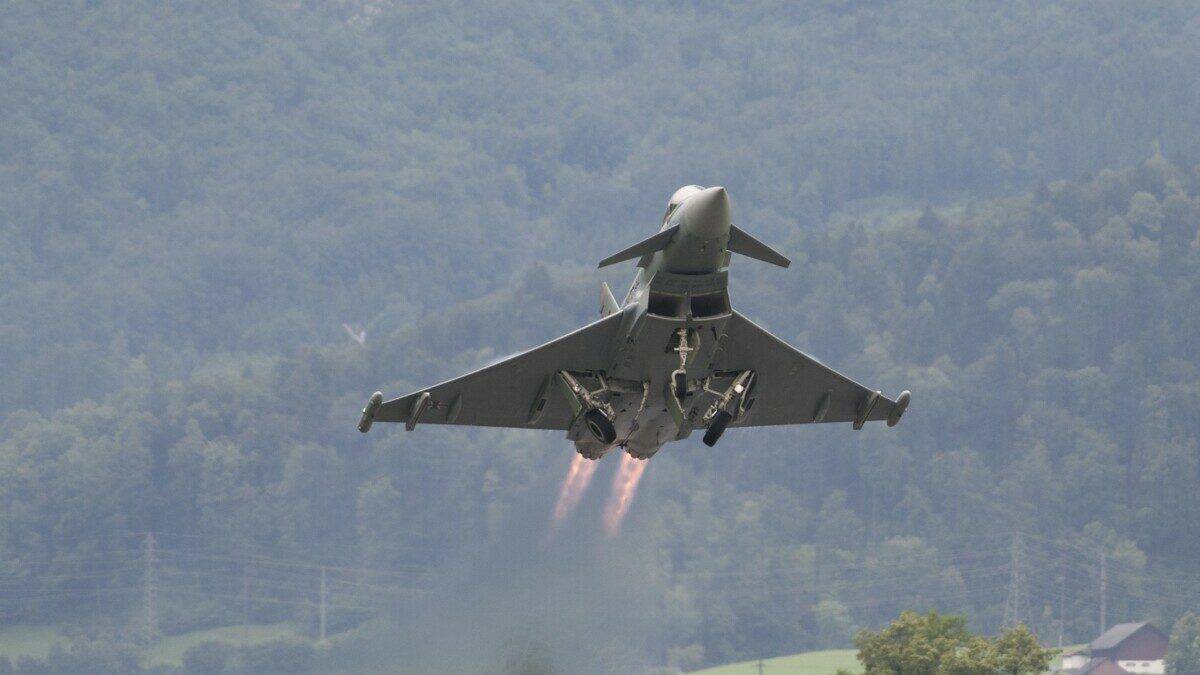
Delta wings can add much more maneuverability to a military fast jet, but in doing so can create controllability issues. To help overcome these issues most modern delta jets will use a combination of fly-by-wire computers and additional wings called Canards.
Learn More…
Try These Articles:
* How Much Fuel Do Airplanes Carry? (With 15 Examples)
* Vertical Tail Fins – Why Do Aircraft Have Them?

